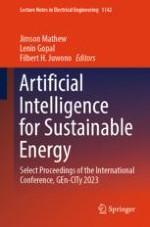2024 | OriginalPaper | Buchkapitel
Comparative Study of Various Deep Learning Models for Structural Anomaly Detection
verfasst von : Nitin Mohariya, Rushikesh Gade, Jimson Mathew
Erschienen in: Artificial Intelligence for Sustainable Energy
Verlag: Springer Nature Singapore
Aktivieren Sie unsere intelligente Suche, um passende Fachinhalte oder Patente zu finden.
Wählen Sie Textabschnitte aus um mit Künstlicher Intelligenz passenden Patente zu finden. powered by
Markieren Sie Textabschnitte, um KI-gestützt weitere passende Inhalte zu finden. powered by
